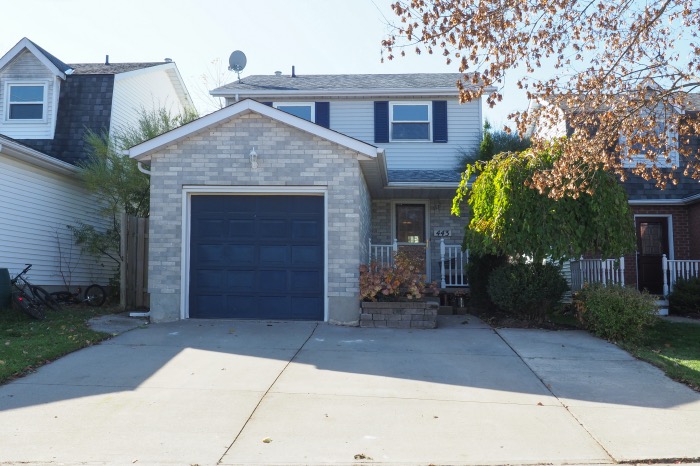Introduction: Back to blogging
I often do this. Start something new, continue it for a while and then seemingly suddenly stop. In my own defence, I usually continue the something that I start for about three years, give or take a few months. In the case of my most recent project — real estate videos, it was more than three years. In the cases of my former newsletter, and my former podcast, both were more than two years, but not three. I ran a community site for about three years. Does anyone remember 365 things to do in Kitchener-Waterloo?
I’m talking about my on-line real estate marketing efforts. Everything I’ve done (except for Facebook and Twitter) has directly lead to business, lead to customers and thus to sales. It’s just that I get bored with doing the same old sale old all the time. I like change
So, I’m going back to blogging. I hope you like this format. Today I have 4 stories for you:
1. How much do you need to earn to afford an average home in Kitchener-Waterloo?
2. Where are Canadian homes sales expected to go from here?
3. Why did the Bank of Canada raise rates in January?
4. How much influence do investors have on Canadian housing?
1. How much do you need to earn to afford an average home in Kitchener-Waterloo?
It is true that the cost of homeownership has been rising in many cities in Ontario, and this has made it increasingly difficult for many residents to afford a home. This is a trend that has been seen not just in Ontario, but also in many other parts of the world. Factors such as a shortage of available homes, low interest rates, and strong economic growth have all contributed to the increase in housing prices.
To address this issue, some experts have suggested a number of potential solutions, including the creation of more affordable housing units, increased investment in public transportation to reduce the need for people to live close to their work, and policies to address the root causes of housing unaffordability, such as income inequality and the lack of good-paying jobs.
It is important for both government and private sector organizations to work together to find solutions to this problem, as homeownership is an important aspect of financial security for many people, and the high cost of housing can have a significant impact on their ability to achieve their other financial goals.
In Waterloo region the average selling price of a home is $713,400. It requires an average income of $110,925 to afford a home in Kitchener-Waterloo.
Link: blogto
2. Where are Canadian homes sales expected to go from here?
According to Desjardins, the Canadian housing market is expected to hit a bottom by the end of 2023 due to a combination of interest rates and a tight labor market. The firm believes that the impact of previous rate hikes has not yet fully manifested and that there may be more pain ahead for Canadians, including a possible recession in 2023. However, the firm also expects national home sales to reach a low in the second half of 2023 before rebounding, and this increase in sales is expected to outpace new listings, which should reach their trough by the end of 2023.
Desjardins predicts that this will result in a return to a seller’s market in some provinces and higher prices, which will act as a brake on improved affordability at the national level. Housing starts are expected to lag behind existing home sales and listings by a quarter or two, but they should rebound in 2024.
Intensified immigration is expected to be the foundation of the market’s long-term stability by the middle of the decade, along with falling interest rates and solid household savings. As a result, Desjardins predicts that sales activity will return to roughly its pre-pandemic pace by the end of 2024.
Link: mpamag
3. Why did the Bank of Canada raise rates in January?
The Bank of Canada (BoC) has hiked its benchmark interest rate to 4.5% in January 2023, due to the combination of labor-market robustness and strong economic growth. According to the minutes of its policy meeting, the central bank stated that tightness in the Canadian labor market persisted, as indicated by surprisingly strong job gains over the past few months. The bank viewed this as a symptom of an economy still in excess demand, with wage momentum plateauing in the range of 4% to 5%.
Despite inflation receding in many top global economies, Canada posted larger-than-expected 2.9% growth in Q3 2022, mainly due to commodity exports offsetting weaker household spending and housing activity. The consumer price index stood at 6.3% in December, down from the peak of 8.1% in summer 2022, and the BoC is expecting the CPI inflation to slow down to 3% by mid-2023, and reach the 2% target in 2024.
The central bank stated that continued strong immigration and resulting household formation would support the housing market fundamentals, counteracting the risk of policy slowing down the market to unsustainable levels. The bank also mentioned that expectations of future monetary policy easing could spur buyers to re-enter the market.
The BoC has reiterated that it would be appropriate to pause its hiking campaign to allow economic developments to unfold in the new environment, and will continue its quantitative tightening program by allowing maturing bonds to roll off.
Link: mpamag
4. How much influence do investors have on Canadian housing?
According to a recent report from Statistics Canada, nearly one-third of homeowners in certain regions of Canada are investors. The share of investors among Canadian homeowners ranged from 20.2% in Ontario to 31.5% in Nova Scotia. Other regions with a strong investor presence include Manitoba (20.4%), British Columbia (23.3%), and New Brunswick (29%). The majority of these properties are owned by investors living in the same province as the property.
The report also noted a decline in the proportion of Canadian households who own and reside in their homes, with data from the 2021 census showing that this share dropped from 69% in 2011 to 66.5% in 2021. Condominium apartments were used more often as investments than other types of homes, with Ontario having the highest rate of condo apartments used as an investment (41.9%). Investment properties outside of census metropolitan areas are more likely to be used as secondary residences or recreational properties, such as cottages, by residents of the province who own only one additional property outside the region of their primary residence. These properties may or may not be rented.
Link: mpamag





